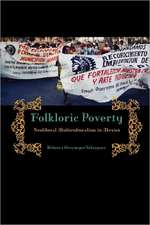From Congregation Town to Industrial City – Culture and Social Change in a Southern Community: The American Social Experience
Autor Michael Shirleyen Limba Engleză Paperback – 31 iul 1997
| Toate formatele și edițiile | Preț | Express |
|---|---|---|
| Paperback (1) | 243.58 lei 6-8 săpt. | |
| MI – New York University – 31 iul 1997 | 243.58 lei 6-8 săpt. | |
| Hardback (1) | 530.46 lei 6-8 săpt. | |
| MI – New York University – 31 dec 1993 | 530.46 lei 6-8 săpt. |
Din seria The American Social Experience
-
 Preț: 241.08 lei
Preț: 241.08 lei -
 Preț: 239.51 lei
Preț: 239.51 lei -
 Preț: 240.49 lei
Preț: 240.49 lei -
 Preț: 225.71 lei
Preț: 225.71 lei -
 Preț: 244.90 lei
Preț: 244.90 lei -
 Preț: 245.49 lei
Preț: 245.49 lei -
 Preț: 242.92 lei
Preț: 242.92 lei -
 Preț: 210.32 lei
Preț: 210.32 lei -
 Preț: 227.62 lei
Preț: 227.62 lei -
 Preț: 245.49 lei
Preț: 245.49 lei -
 Preț: 240.27 lei
Preț: 240.27 lei -
 Preț: 242.22 lei
Preț: 242.22 lei -
 Preț: 241.64 lei
Preț: 241.64 lei -
 Preț: 253.55 lei
Preț: 253.55 lei -
 Preț: 243.19 lei
Preț: 243.19 lei -
 Preț: 242.40 lei
Preț: 242.40 lei -
 Preț: 226.67 lei
Preț: 226.67 lei -
 Preț: 247.23 lei
Preț: 247.23 lei -
 Preț: 225.49 lei
Preț: 225.49 lei -
 Preț: 226.67 lei
Preț: 226.67 lei
Preț: 243.58 lei
Nou
Puncte Express: 365
Preț estimativ în valută:
46.61€ • 50.83$ • 39.30£
46.61€ • 50.83$ • 39.30£
Carte tipărită la comandă
Livrare economică 24 aprilie-08 mai
Preluare comenzi: 021 569.72.76
Specificații
ISBN-13: 9780814780862
ISBN-10: 0814780865
Pagini: 338
Dimensiuni: 152 x 229 x 15 mm
Greutate: 0.45 kg
Ediția:Revised
Editura: MI – New York University
Seria The American Social Experience
ISBN-10: 0814780865
Pagini: 338
Dimensiuni: 152 x 229 x 15 mm
Greutate: 0.45 kg
Ediția:Revised
Editura: MI – New York University
Seria The American Social Experience
Recenzii
"A fine addition to the study of urbanization. . . . Shirley's book will appeal not only to a regional audience in the South but also to all students of the diverse American experience."
American Historical Review"Compelling. . . . [an] important contribution to our understanding of the modernizing of America."
Journal of Interdisciplinary History "A welcome contribution to the field of Southern labor history."
Journal of Social History
"A fine addition to the study of urbanization... Shirley's book will appeal not only to a regional audience in the South but also to all students of the diverse American experience." --American Historical Review"Compelling... [an] important contribution to our understanding of the modernizing of America." --Journal of Interdisciplinary History "A welcome contribution to the field of Southern labor history." --Journal of Social History
American Historical Review"Compelling. . . . [an] important contribution to our understanding of the modernizing of America."
Journal of Interdisciplinary History "A welcome contribution to the field of Southern labor history."
Journal of Social History
"A fine addition to the study of urbanization... Shirley's book will appeal not only to a regional audience in the South but also to all students of the diverse American experience." --American Historical Review"Compelling... [an] important contribution to our understanding of the modernizing of America." --Journal of Interdisciplinary History "A welcome contribution to the field of Southern labor history." --Journal of Social History
Descriere
"A fine addition to the study of urbanization. . . . (Michael) Shirley's book will appeal not only to a regional audience in the South but also to all students of the diverse American experience".--AMERICAN HISTORICAL REVIEW. "Compelling. . . . (an) important contribution to our understanding of the modernizing of America".--JOURNAL OF INTERDISCIPLINARY HISTORY. 17 illustrations.
Notă biografică
Textul de pe ultima copertă
In 1835, Winston and Salem was a well-ordered, bucolic, and attractive North Carolina town. A visitor could walk up Main Street from the village square and get a sense of the quiet Moravian community that had settled there. Yet, over the next half-century, this idyllic village was to experience dramatic changes. While calling forth images of great factories, mills, and machinery, the industrial revolution involved far more than mere changes in modes of production. The essence of industrialization was nothing less than the full-scale societal transformation of economic, social, and political institutions, as well as the emergence of a new mind-set that brought about new ways of thinking and acting. In this compellingly descriptive account, Michael Shirley examines the case of Salem, a community of artisans and small farmers united, as members of a religious congregation, by a single vision of life. Transformed in just a few decades from an agricultural region into the home of the smokestacks and office towers of the R. J. Reynolds Tobacco Company and the Wachovia Bank and Trust Company, the Moravian community at Salem offers an illuminating illustration of the changes that swept Southern society in the nineteenth century and the concomitant development in these communities of a new ethos. While providing a wealth of information about the Winston-Salem community specifically, Michael Shirley's book also significantly broadens our understanding of how wholesale changes in the nineteenth-century South redefined the meaning and experience of community. For, by the end of the century, community had an entirely new meaning, namely as a forum in which competing individuals pursued privateopportunities and interests.


















